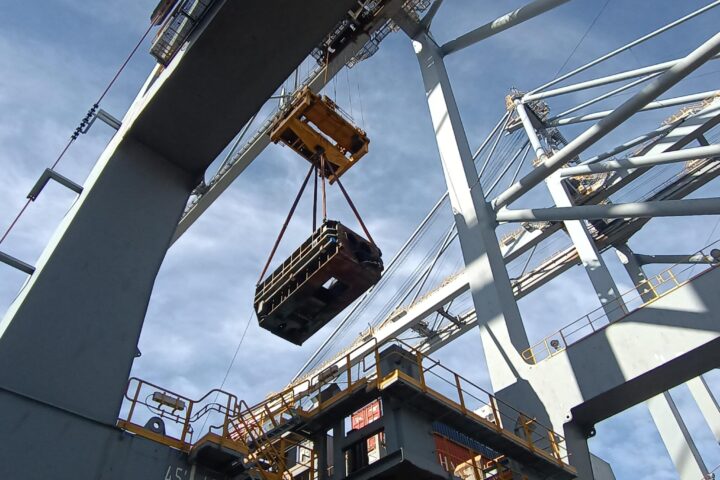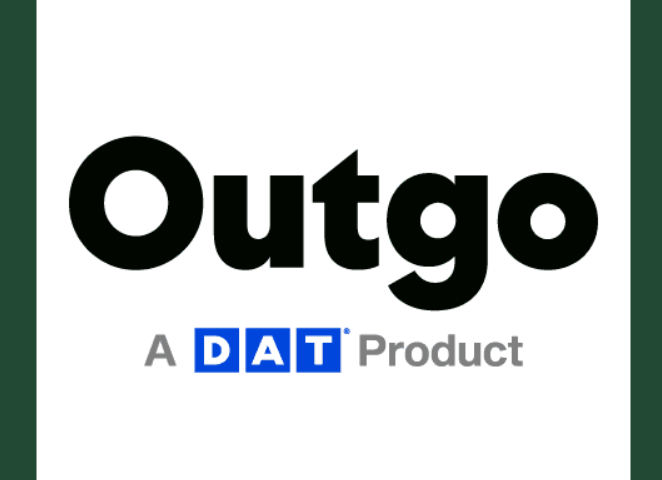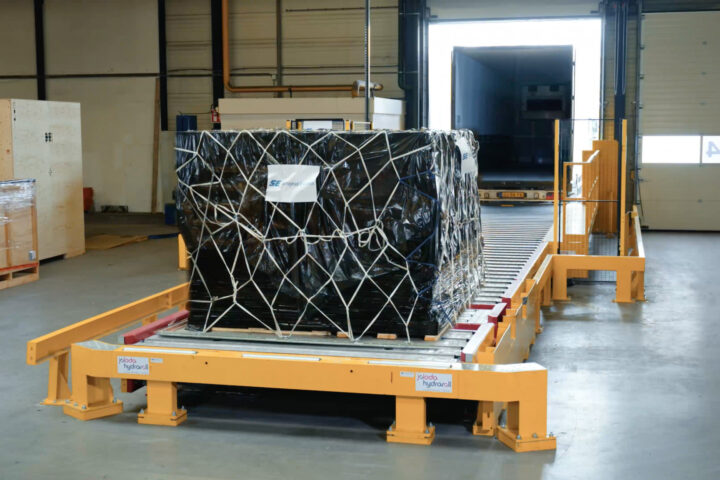Weekly highlights

- Asia-US West Coast prices (FBX01 Weekly) fell 5% to $2,343/FEU.
- Asia-US East Coast prices (FBX03 Weekly) fell 5% to $3,467/FEU.
- Asia-N. Europe prices (FBX11 Weekly) fell 1% to $2,340/FEU.
- Asia-Mediterranean prices (FBX13 Weekly) increased 7% to $2,935/FEU.
- China – N. America weekly prices increased 2% to $5.54/kg.
- China – N. Europe weekly prices stayed level at $3.75/kg.
- N. Europe – N. America weekly prices fell 1% to $2.11/kg.
Analysis
President Trump’s exemption of many electronics from reciprocal tariffs – including from the 145% minimum levy on all Chinese exports – has not slowed the steep drop in China-US container trade that started on April 9th.
Some US-bound vessels are reportedly departing China only half full as many shippers cancel orders that have now more than doubled in cost. In response, carriers are blanking sailings at the rapid rate reminiscent of the start of the pandemic when demand collapsed for several months.
Inventories that importers built up from frontloading over the last few months will allow many shippers to wait out the current tariff hike on Chinese goods for several months, while spiking demand for bonded US warehouses also reflects this wait and see approach.
That carriers are blanking few Asia – Europe sailings despite the record capacity scheduled on this lane suggests that demand is increasing to Europe, with speculation that some orders canceled by US shippers are being diverted to the European market.
The European Commission, concerned with a potential flood of Chinese goods, has started monitoring import levels closely. A sharp increase in container traffic to Europe could also exacerbate the current port congestion at several European hubs. Alternative export markets for China, like India, are also anticipating an increase in finished Chinese goods if China is forced to diversify away from the US.
China’s decision to retaliate US tariffs – which has meant a drop in US exports as well – sets it apart from nearly all other countries opting to negotiate with the US instead. In addition to seeking commitments to lower barriers to and buy more US exports, the US may also ask partners to reduce their trade with China – an element China is warning these countries against and threatening retaliation.
Though the tariff roll out on China has put China – US ocean demand on pause, the 90-day reprieve on all other reciprocal tariffs means that many shippers on other lanes will continue to frontload ahead of the July deadline in case negotiations fail. Carriers on these lanes may be expecting an early – and possibly short – peak season as a result, with Peak Season Surcharges of $2,000/FEU announced for May, and Maersk’s Asia – US PSS excluding shipments from China.
Though country-to-country level data shows rates to the US have increased slightly from origins like Vietnam since the tariff pause, prices from China – despite reports of a sharp drop in demand – have surprisingly not collapsed. On the overall lane level FBX Asia – N. America rates eased only slightly last week. The significant upcoming transpacific blanked sailings will aim to prevent a sharp rate slide despite falling volumes. Asia – Mediterranean prices increased 7% to about $3,000/FEU last week, and may reflect some diverted volumes and increased demand on this lane.
Frontloading to date, China tariffs, and the possible introduction of more tariffs in July will likely mean a drop in US container import volumes for H2. The WTO projects the trade war will cause global trade in goods to contract by as much as 1.5% and US imports to fall by 10% or more – with import strength so far this year meaning most of that drop will come in the second half of the year.
Finally for ocean freight, the USTR released a revised port call fee proposal targeting Chinese ship building.
The scaled-back though still significant fees would go into effect in October, apply only to Chinese carriers or China-made vessels, and be assigned per call to the US instead of per port call. This version is also subject to change, with a hearing scheduled for May, but its current iteration would not lead to the significant port call omissions and congestion that many feared would result from the original per port call proposal.
There were more signs this week that the looming May 2nd cancellation of US de minimis eligibility for Chinese imports will have a significant impact on the air cargo market.
UPS and FedEx are applying surcharges to China-US parcels for the rest of the month, possibly reflecting a last-minute surge in demand ahead of the expiry, and Hong Kong Post announced it will no longer handle US-bound parcels in protest to the tariffs. DHL has suspended service for imports above the $800 but below $2,500 in value which since April 5th have required a formal entry process, as the sudden rule change has overwhelmed operations.
Temu and Shein informed their US customers that they will increase prices this week due to the US policy changes. Recent increased sales on these platforms may also reflect a last-minute rush by US shoppers before the May deadline, with China-US air cargo rates level at about $5.50/kg since climbing 20% through March.
Join 50k+ subscribers who get our free freight weekly update
“*” indicates required fields












